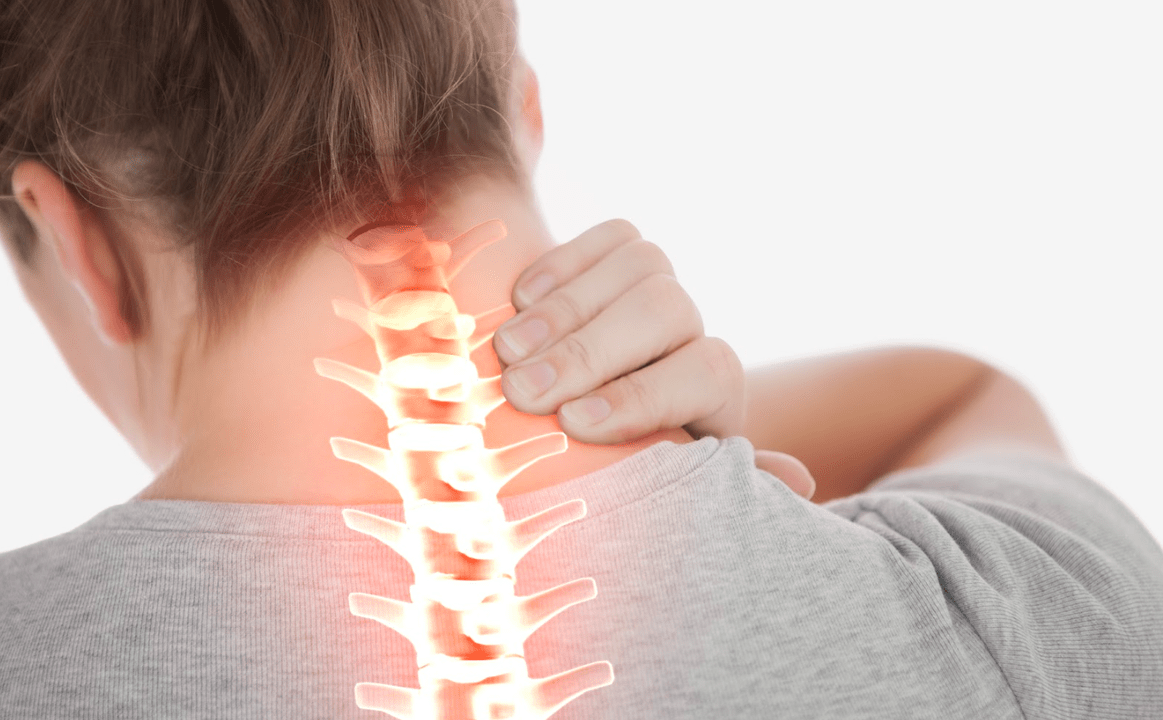Osteochondrosis is a degenerative-destructive lesion of the spine, which involves the lesion of the vertebrae bodies, the joint apparatus, the ligamentary apparatus and the intervertebral discs. This disease is common enough evenly in all countries - from 45 to 85% of the population suffers from this disease. The onset of osteochondrosis occurs in patients over 30-35 years of age, but cases of an earlier onset of the disease are known. Men and women become ill with about the same frequency.Reasons
There is no united reason for the development of osteochondrosis. There are a large number of predisposing causal factors. The main ones are as follows:Spinal injuries (fractures, bruises, dislocations);Hereditary predisposition;Leg diseases causing spinal overload - this includes flat legs, limestone deformation of the foot, deformation of valgus of the foot;Wearing close and uncomfortable shoes for a long time (also causes spinal overload);Overweight and obesity;Age -related changes;A sedentary lifestyle;Athletes who abruptly abandon their training and hours;Metabolic disorders;Spinal curvature (kyphosis, lordosis, scoliosis);Professional characteristics - weight lifting, frequent turns and jokes of the body, work in the uncomfortable position of the body;Frequent and prolonged hypothermia;Stress;Specific climate, both at the place of residence and at work - low air temperatures and high humidity.
When exposed to one or more cause and effect factors, the development of the disease begins. It is customary to divide it into four main stages:The first stageSThere is a decrease in the amount of moisture at the core of the intervertebral disc, it becomes greater, the distance between the vertebrae decreases. The cartilage is covered with minor cracks.The second stageSDue to the decrease in the distance between the vertebrae, the muscle and the ligament apparatus of the vertebrae occur. This leads to pathological mobility of the spinal bodies, to their movements.The third stageSDue to the progressive processes in the spine, squeezing (convex) of the intervertebral discs, the vertebrae occurs.The fourth stageSBetween the vertebrae, bone spines (osteophytes) appear, which are aimed at eliminating vertebral mobility, preventing dislocations. Over time, there are so many of them that the affected vertebrae completely lose their mobility. In this case, there is a trauma of blood vessels and nerves passing near the vertebrae and leaving the spine.
At the first and last stages of the disease of clinical manifestations (pain), the patient does not have the patient.Classification
There are many classifications of osteochondrosis. Each doctor chooses the most acceptable for himself. The following classifications are most commonly used:
Classification for spinal damage:Cervical osteochondrosis;Thoracic osteochondrosis;Lumbar osteochondrosis;Crowns osteochondrosis;Extensive (ordinary) osteochondrosis - affects 2 or more spine.
Classification by the degree of change in the intervertebral disc (radiological stages):Stage 0 - there is no change in the disk;Stage 1 - minor changes, including maximum inner tears;2 stages - severe changes in the disk while maintaining the outer surface; Stage 3-target disc is completely affected (cracks with spread to the outer surface, pressing the disc from under the bodies of the vertebrae, etc. ).
Classification by clinical manifestations and degree of impaired spinal function:Stage 1 - the functioning of the spine does not change, the patient experiences mild pain in the lesion;2 stages - the functioning of the spine is impaired (the sublux of the vertebrae bodies, disc convexity, pinching of the nerves), the pain at the site of destruction is increased;Stage 3 - the spine is deformed, the hernia of the intervertebral discs, significant pain occurs;Stage 4 - the patient is difficult to move, the mobility of the spine decreases, the pain during the shortest movement. The patient is given damage.Symptoms of osteochondrosis
The symptoms of osteochondrosis depend on the area of spinal damage and the degree of disorders that occur in it.
For the extended clinical picture of osteochondrosis of the cervical spine, the following signs are characteristic:Violation of visual acuity;Dizziness;Tinnitus;Flickering "flies" in front of the eyes and the appearance of colored spots;Hearing loss;Headache in the neck, temporal and parietal region, intensifying as the cervical spine moves;Loss of consciousness;Snoring;Hoarse voice or weight loss;Numbness and loss of sensitivity on the skin of the face, neck and hands;Dental destruction;Blood pressure board.
For chest osteochondrosis, the following symptoms are characteristic:Heart pain, permanent long time, pain or pressing, often acute, sewing, acute, patients may show a specific point of pain; Tingling of the skin in the chest, abdomen and back;Spinal pain, especially between shoulder blades, strongly pronounced;Pain when lifting hands;Pain with sharp and deep breath and later join when exhale;Pain, discomfort and difficulties while tilting the body in any direction.
The following symptoms are characteristic of osteochondrosis of the lumbar and sacral spine:Soreness in the lumbar and sacral spine (lumbalgia), which can give in one or two legs, intensifying with any movement of the spine in the affected area;The legs freeze at a comfortable temperature for other parts of the body;Almost constant tension in the muscles of the back, especially the lumbar region;Feeling of tingling, creeping geese and tingling on the skin of the feet and butt;Varicose veins of the legs;Impaired potency in men;Increased sweating;Palliness of the skin on the feet;Irregular menstruation in women.
With prolonged and neglected osteochondrosis, when the affected vertebrae merge with each other, the patient is only worried about the inability to move in a particular spine, pain, as a rule, decreases or leaves completely.Diagnostics
First, the doctor conducts a patient examination and examination, making a preliminary diagnosis. Additional examination methods are appointed to confirm. With osteochondrosis, they are only instrumental, as the laboratory (tests) will not show confirming changes.
The main diagnostic methods include the following:X -Rev review. Allows you to determine the degree of damage to the vertebrae, their location, bone formations. By indirect methods, you can determine the condition of the bone ducts and intervertebral discs;Computed tomography (CT). Allows you to determine the condition of the intervertebral discs, their structure and shape, deformation of the vertebrae and compression of nerve endings and roots;Magnetic resonance imaging (MRI). Allows you to determine the less disorders of the spine and is prescribed in cases where the contradictory issues remain the position of the Labor Code;Ultrasound procedure. Allows you to identify the degree of blood flow to the vessels that feed the spinal cord and other organs;Myelography. The method of radiography of the spine using contrast matter. Allows you to identify the intervertebral hernias.Treatment of osteochondrosisConservative treatment
Conservative treatments are used in the treatment of osteochondrosis. In this case, the approach to each patient should be individual and complex. Conservative treatments can be divided into 4 main groups: Treatment with drugs;Physiotherapy;Spa treatment;Diet (basics of proper nutrition).Treatment of osteochondrosis drugs
Medicines used in the treatment of osteochondrosis should be used during periods of exacerbation. They contribute to the reduction of symptoms and also affect some cause and effect factors in the development of the disease. The main groups of medicines used in the treatment of osteochondrosis:Nsaid. Non -steroidal anti -inflammatory drugs have anesthetic, anti -inflammatory effects, and also reduce the increased temperature of the affected tissues of the spine and its structures. In the case of pronounced symptoms, the first days of exacerbation of the disease are prescribed in the form of injections. The frequency of use is 1-2 times a day. They then switch to tablet forms of medicines at 10-30 days, if necessary. The frequency of administration is 1 to 4 times a day. Also, along with tablets and injections, ointments or creams are displayed on the skin in the spine 1-3 times a day. Mussorelaxants. The preparations in this group make a great comparison with increased muscle tone, relaxing transversely broken muscle fibers and facilitate the patient's condition. The average course of treatment is about 1 month. In severe symptoms, treatment begins with injection forms of drugs. The dosage should be started at a minimal, gradually increases until the therapeutic effect is achieved, and then gradually decreases until completely canceled.
A few more groups are used as additional medicines:Vitamins. Accelerate tissue repair processes, normalize nerve conductivity, accelerate metabolism, and more. Almost always these osteochondrosis drugs are prescribed in the form of injections, courses for 10 days. These are vitamins B1, B2, B6, E.Blood preparations. These drugs normalize blood flow to the veins and arteries, restore the muscle tone of the blood vessels and restore metabolism. Most often, tablet forms of release are used. The duration of treatment with these agents is from 1 to 3 months. Also, in extreme cases, the injection of the drug is possible for the first 5-10 days, and the subsequent transition to tablets. Glucocorticosteroids. They have anti -inflammatory, decongestant effects, improve the work of NSAIDs and muscle relaxants. Depending on the severity of the patient's condition, they are prescribed in the form of injections, intramuscularly or inside -faster or in the form of oral tablets. The course of treatment is chosen individually, from several days to several weeks. The removal of the drug should be done with a gradual dose reduction.Biogenic stimulants. Accelerating metabolism, stimulating tissue repair, reducing inflammation and tissue swelling, and more. It is most commonly used in injectable form and slightly more common in the form of tablets or other forms of oral administration. The course of treatment can vary from 1 week to 2-3 months, depending on the severity of the disease.Physiotherapy treatment of osteochondrosis
Physiotherapy measures combined with medicines allow you to accelerate the recovery processes and also expand the remission period when used outside the exacerbations. There are many methods of physiotherapy and most of them practice well in the treatment of osteochondrosis:Electrophoresis. Depending on the medicine used in this procedure, an analgesic effect is obtained. Metabolism also improved the normalization of blood flow to the affected tissues.Acupuncture (acupuncture). With the help of special best needles and their effects on active points located on the patient's skin, an analgesic effect is achieved, stimulating recovery and metabolic processes and inflammation decreases.Magnetotherapy. Reduces pain, swelling and tissue inflammation, accelerates nerve conductivity, normalizes metabolic processesManual therapy. Mobility is restored in the joints of the spine, the pain syndrome is reduced.Massage. Normalizes muscle tone, eliminates back pain, restores nerve conductivity.Exercise therapy. Restoration of spinal motility, reducing pain, restoring the usual lifestyle, strengthening the muscle frame of the back, relaxation of the posterior muscles, acceleration of metabolism.The grip of the spine. The mobility of the spine is restored, prevents the progression of the disease and the development of complications and anesthesis.Laser therapy. Improves blood supply, stimulates tissue regeneration, reduces pain and inflammation, reduces swelling of the spine.Thermotherapy. Anesthetic effect, normalization of blood and lymph flow through the blood vessels, reducing inflammation in the tissues, accelerating the recovery of cartilage.Mudreing (peloid therapy). Reduces spinal pain, reduces muscle spasm, slightly reduces the processes of inflammation, improves blood supply and metabolism.
One patient may be prescribed for 1 physiotherapy event and their complex. It depends on the severity of the osteochondrosis process and the accompanying pathologies. The duration of treatment on average is 10-15 days. It is recommended to repeat 3-4 times a year. In this way, it is possible to reduce the frequency of exacerbations and the rate of progression of osteochondrosis several times.


























